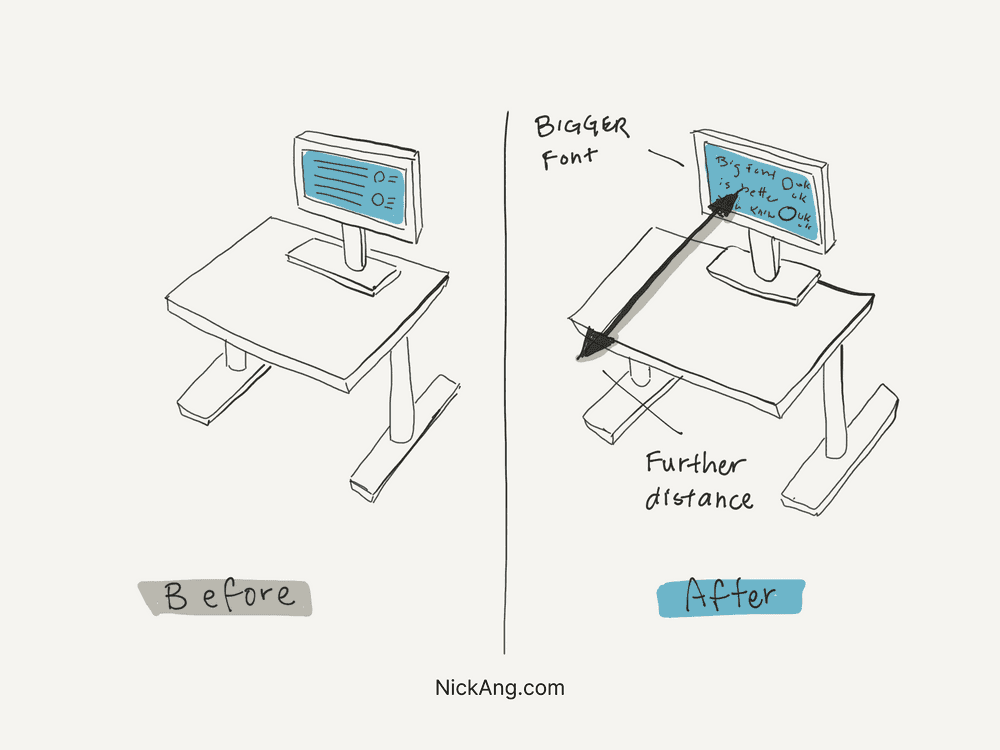Two simple adjustments to protect your eyes from eyestrain for computer workers

As a person who works 9 hours a day on a computer on weekdays and at least another 10 hours over the weekends, I see the importance of caring for my eyes.
In 2011 I underwent Lasik corrective surgery for my eyes in Singapore and a week later, I had regained almost perfect vision. Since then, however, my eyesight has deteriorated significantly. Although I can still read what is on the monitor without having to squint, words on signposts further than 2 meters are now hard to make out.
I have also been experiencing on-and-off eye fatigue for years. One day every week I would be forced to take a longer break from the computer (or any backlit screen for that matter) because my eyes were just too dry for me to continue working.
Okay, so here comes the good news. About two months ago, things started to change. I asked in the ‘off-topic’ channel on Slack where I work for advice on combating eyestrain. One of my colleagues replied suggesting that I place my monitor further away and increase the font size on the screen, and he sent me a link to a 1996 research paper.
The paper recommended the same thing and the science sounded convincing, so I tried it, and I’m happy to report that it works.
I have not experienced eyestrain since I made these two simple adjustments. My eyesight has even improved slightly!
To be precise, this is what worked for me:
- Use an external monitor whenever you can, especially when doing longer stretches of work
- Place the monitor more than an arm’s length away from your face. Considering viewing distance alone, farther is better, so place it even farther if your table allows it
- Increase the default font size in your operating system to close to maximum
Now for a primer on the science of why this works. These two simple adjustments work together to reduce the amount of strain on your eye muscles. Specifically, you are reducing eyestrain by:
- reducing convergence, which is when your eyeballs turn inward towards your nose when focusing on a close object
- reducing accommodation, which is when part of your eye (the lens capsule) changes shape to focus on a close object
- (and using an external monitor helps you to retain the same information density with a larger font, preserving your productivity)
There are probably other variables to consider if you want to maximise your eye health, like matching your monitor’s brightness to the ambient light conditions in the room you’re working from or choosing more reading-friendly default typography. Plus, you ought to take breaks from the screen once every hour or so.
I am happy with the improvements I am seeing already, so I’m saving myself the trip down other rabbit holes.
If you are experiencing eyestrain from regular screen time and do most of your work on a computer, I recommend just trying the adjustments I mentioned above. It works. Try it! You’ll see.
Thank you Patrik Akrenius for the suggestion!
